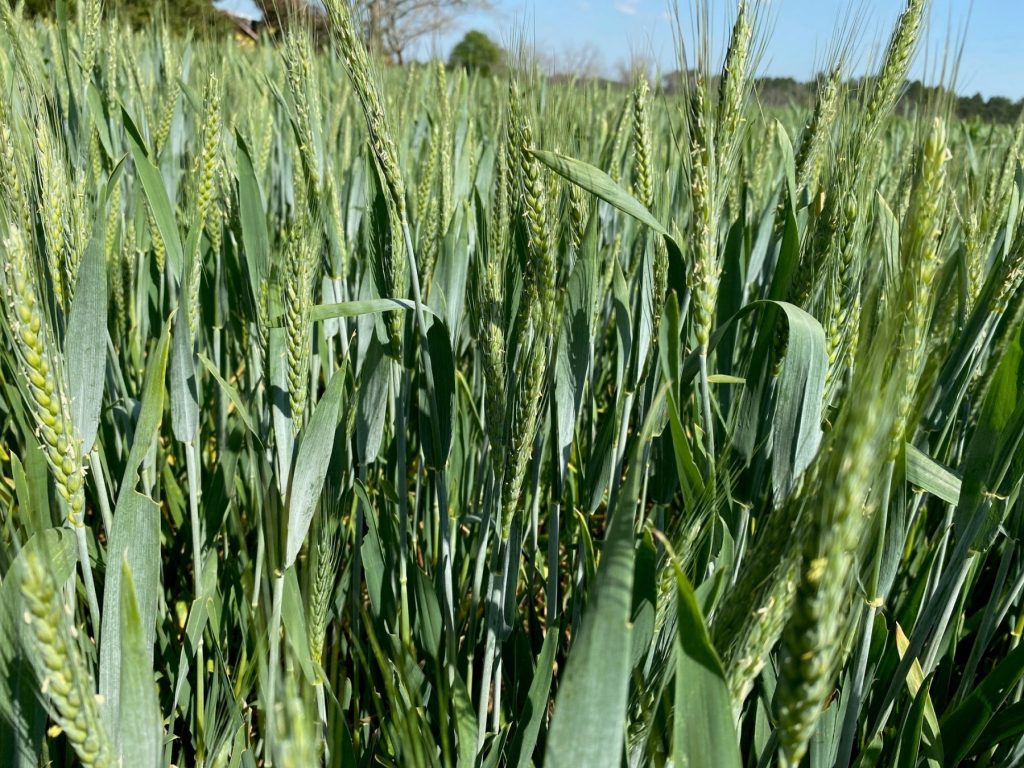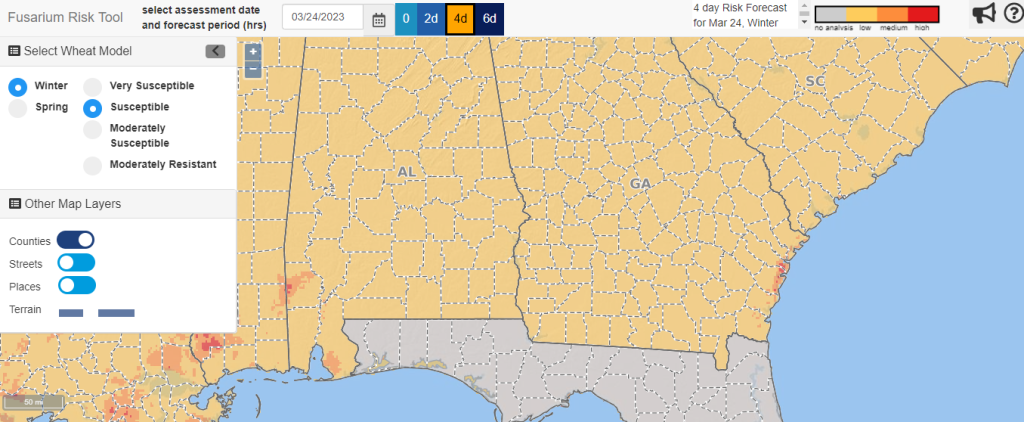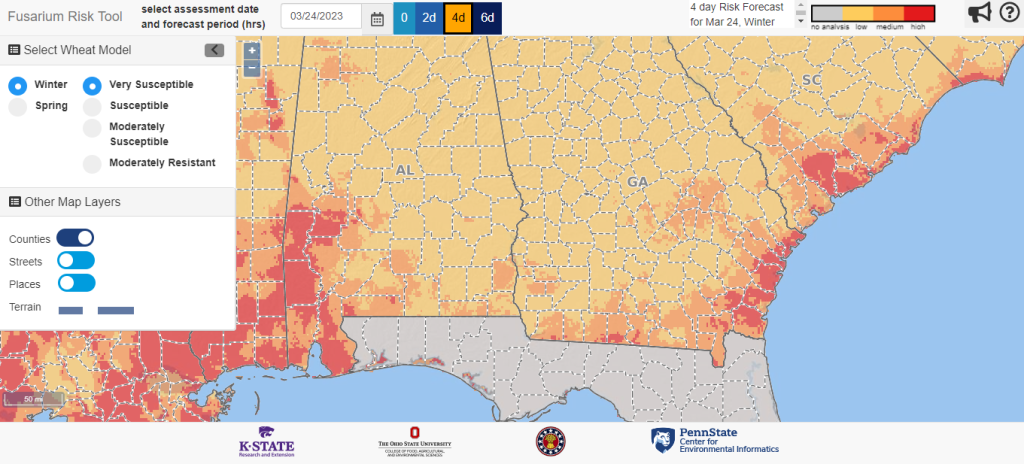Fusarium Head Blight (FHB) has been a topic of discussion with growers, consultants and retailers over the last week. Growers need to monitor the stage of development of their wheat crop over the next few weeks in order to make fungicide application decisions. The stage of development of the area wheat crop ranges (March 24, 2023) from Feekes Stage 9 to 10.5.3. On March 23, 2023, Alfredo Martinez-Espinoza, Professor and Extension Specialist, University of Georgia gave an update on the head blight situation.
In most of the southern part of the state, wheat is generally at late booth and/or early heading, but cold temperatures have slowed the crop down some. The effect of recent freezing temperatures remains to be seen. This is especially true in the northern part of the state. Several incidences of powdery mildew have been reported. The FHB risk forecast tool is currently showing “low risk”. However, with rising temperatures, projected rainfall, and the crop soon reaching critical stages for FHB infection, there is a need for continued vigilance. For the northwest part of the state, wheat growth stage is at early booth.
According to the publication How a Wheat Plant Develops: Identifying Growth Stages: It usually takes 3–5 days for the head to be fully extended above the flag leaf and another 3–5 days to flower after full heading.

The fungi that causes FHB can overwinter on crop stubble such as wheat, barley, and corn, and as soilborne inoculum. FHB is introduced into a field through infected seed or wind-borne inoculum. The fungus is spread rapidly by rain splash and wind. The head, and in particular the open female flower during anthesis (pollination), is most susceptible to infection by Fusarium spores. Some infection can occur during kernel development. Moist environmental (rain, irrigation, fog, and long evening dew periods) conditions favor spore (inoculum) production and infection. Recent models have suggested that three or more rain or irrigation events from anthesis until 3-5 days post-anthesis and temperatures ranging from 77 to 86 degrees F (25 to 30 degrees C) will result in severe scab if inoculum is present and the variety is susceptible.
How do we manage this disease? FHB control using fungicides can be a challenge because of timing. Foliar applications with a triazol fungicide work best when applied at or within a week of early flowering (Feekes 10.5.1). Applying fungicides earlier (at heading, Feekes 10-1-10.5) will not sufficiently suppress FHB and DON. However, recent studies have shown that delaying application 5-7 days after the start of flowering can still suppress FHB and DON — in other words, later fungicide applications can still be effective in case of delays (such as weather) (Source – Optimizing Fungicide Use for Fusarium Head Blight (Scab) and
Associated Mycotoxins – Publication from the Crop Protection Network).
.
Strobilurin fungicides are not recommended for the management of FHB. Research from other states indicate that strobilurin fungicides can increase the DON content of FHB infected grain. Below are the recommended fungicides for the management of FHB, rates and efficacy. This information is from the 2023 UGA Pest Control Handbook.

Another interesting tool for the management of FHB is the Fusarium Head Blight Prediction Model. This model helps wheat producers predict the severity of this disease in their area. The model can be seen at https://www.wheatscab.psu.edu/ The two illustrations below give examples of the Fusarium Head Blight Model for March 24, 2023 for both susceptible and very susceptible wheat varieties.


Some great resources for FHB include the publications
Identification and Control of Fusarium Head Blight (Scab) of Wheat in Georgia
Optimizing Fungicide Use for Fusarium Head Blight (Scab) and Associated Mycotoxins
If you have questions about this topic please contact your local county Extension agent.
